The Story
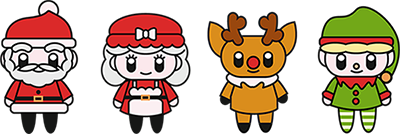
Introduction
Title:
Santa's Decorating Machine
Theme:
humorous situations revolving around decorating for Christmas
Logline:
Santa gives his wife a decorating machine that she uses to decorate their house. While they are away, Rudolph and the Elf put their own decorating plans into action.
Treatment:
MRS. CLAUS is sweeping the floor in the attic. SANTA CLAUS appears and offers her a decorating machine as a Christmas present. She loves the gift, and uses it to decorate their house, happily. Satisfied with new decorations, they go downstairs.
While they are away, RUDOLPH and THE ELF, who have been hiding behind a pile of presents, appear in the attic. Taking turns, they start clicking buttons on the machine, messing with Mrs. Claus's decorations. As they get carried away trying out their own ideas, they start banging on the buttons too hard, breaking the machine.
Santa comes up to the attic and realises what they've done. He gets angry at them, and they run away. Mrs. Claus also arrives, and thinks Santa is responsible for broken machine. She is furious and starts chasing him around the house, with her broom.
Rudolph and the Elf feel bad about what they've done. They find the instructions to how to fix the machine and offer Mrs. Claus flowers as an apology. All is forgiven, decorations are fixed, and everyone is happy again.
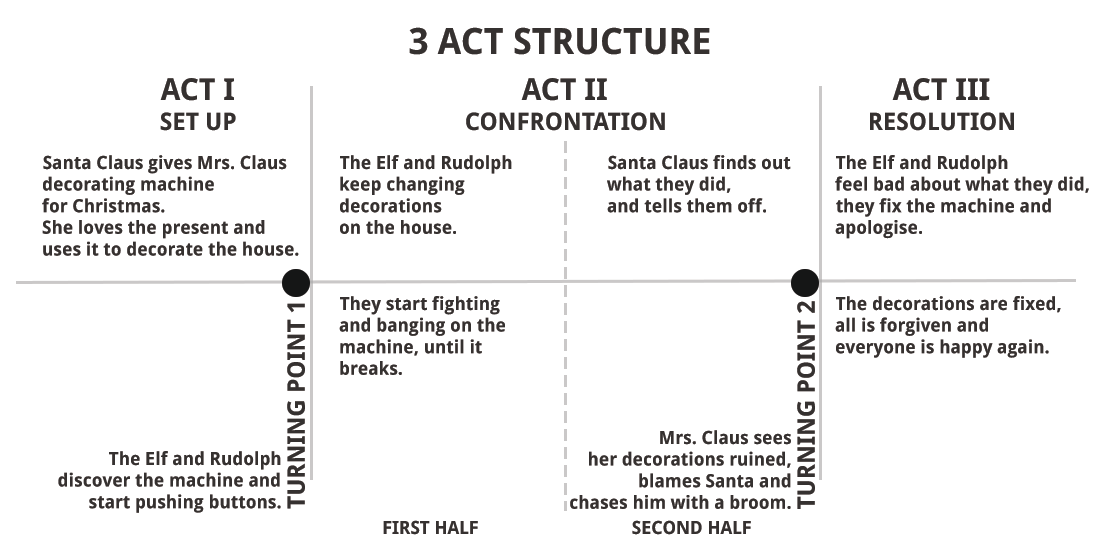
Characters
Santa Claus

Santa is an expert in giving gifts and he delivers millions of them each year. Every day he is busy organising the presents and preparing for Christmas. He employs hundreds of elves and reindeer, so he's a busy man. He is also a loving husband and likes to surprise his wife regularly with new gifts, especially around Christmas time.
Mrs. Claus
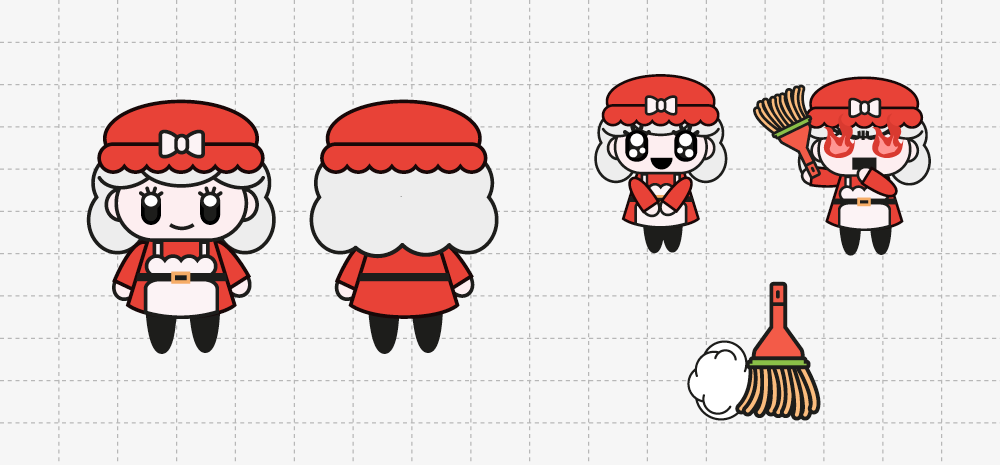
Mrs. Claus spends most of her time doing housework and preparing dinner. As Santa Claus is always extra busy in December, she is the one in charge for placing elaborate decorations around their house, making it beautiful for Christmas. She takes great pride in her decorations, and has won many Christmas decorating contests. However, this takes a lot of her time, which she would prefer to spend with her husband.
The Elf
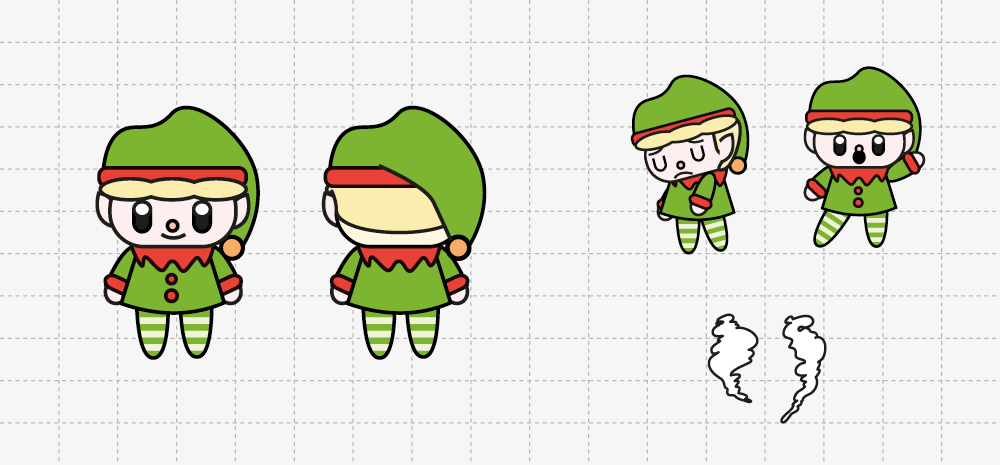
The Elf is one of Santa's helpers. He works full time in Santa's workshop, making gifts for children all year round, for Santa to deliver on Christmas. He likes his job, but sometimes finds himself getting slightly bored. When that happens, he looks for sneaky ways to prank Santa, to entertain himself. He knows that what he does is often wrong, but he doesn't do it with malice. He often seeks Rudolph's help for his more elaborate pranks.
Rudolph
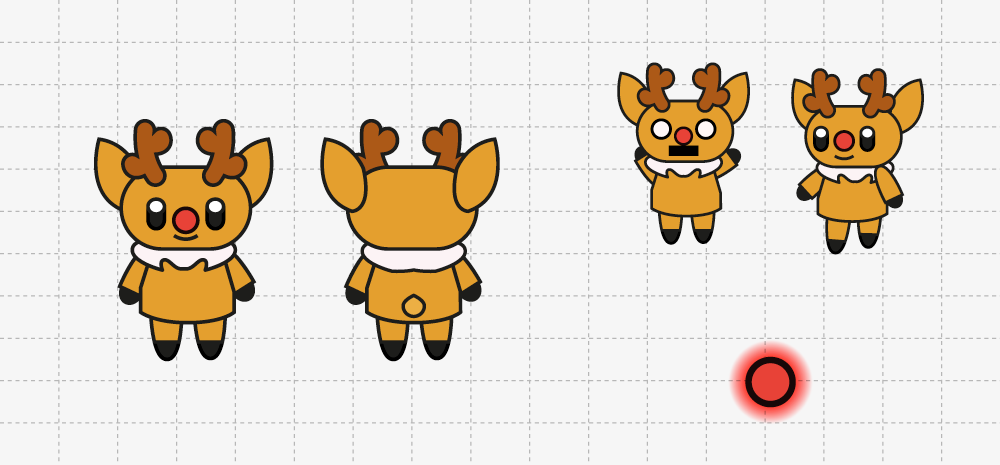
Rudolph is the head reindeer and he leads the other reindeer when they deliver presents each Christmas with Santa. Due to his position, he is also close to Santa and some of the elves. He can be easily talked into joining in on one of his elf friend's pranks.
Dramaturgy and Semiotics
Aristotle's rhetorical appeals
In terms of modes of persuasion, our story is mostly focusing on Pathos. Pathos, or the appeal to the viewer's emotions, is achieved in several different parts of the story, with a variety of emotions.
Firstly, we see Santa's wife being happy for the gift, and using it to place Christmas decorations. These two events combined evoke childhood memories, and thus feelings of nostalgia, and joy. The animations and sound effects that accompany the decorations attempt to evoke feelings of awe in the audience. Afterwards, once the Elf and Rudolph appear and start playing around, they function as the comic element. Combined with animations and sound effects, they add to the pathos of the story, by making the audience laugh.
In the following scene, when Santa finds out what they've done, the viewers could experience feelings of anger or fear and shame, depending on which character the viewer empathises and identifies with. As additional comic element to the story, we see Santa's wife blaming him for the mess.
With the culprits apologizing and atoning for the mess they caused, cathartic moment is experienced. As all is forgiven, and the protagonists happily celebrate the holidays, audience is reminded about true meaning of Christmas.
In western cultures, Santa is being perceived as a fatherly figure, generating feelings of warmth, joy and security to the audience. In our story he's the personification of good and to some extend authority (ethos element): he is being a good husband, and serves as a contrast to the Elf and Rudolph, the bad (naughty) elements of the story.
Identification - fascination
Identification will be achieved through both the environment, events, as well as the appearance of the characters. The viewer will recognise the setting as a Christmas scene, because of the strong symbolism of Santa Claus, especially combined with the decorations, the gift, and the other characters that have Christmas connotations. This gives the audience the possibility of empathy.
Fascination develops as the story progresses. The audience will begin to become engaged and that will fuel their imagination. They will be eager to see how the story progresses and even though the story is only short they will await the consequences of the Elf and Rudolph's actions, creating a sense of excitement.
The hook
The hook in our story will come at the very beginning when Santa arrives with the present for his wife. The viewer will instantly associate the scene between Santa and his wife with Christmas spirit and the act of giving.
Premise
Santa buys his wife a new machine to decorate their house for Christmas, but Rudolf and one of the elves have other plans to play a trick on Santa.
The main idea
The main idea in our story is that you shouldn't be too quick to judge. Santa gets the blame for something he didn't do in the story when his wife assumes it was his fault that the machine got broken resulting with her decorations getting messed up.
The main values
The story reflects different values - from acts of kindness and love in the giving presents, which are in contrast with naughtiness of Rudolph and the Elf, breaking the machine and destroying Mrs. Claus's hard work - to knowing when to admit you were wrong and forgiveness that follows.
It aims to remind us that Christmas isn't just about decorations, gifts and food - it is about spending some quality time with those you love.
